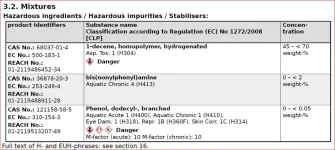OVERKILL
$100 Site Donor 2021
Yep, that's why I never understood the obsession with stratospherically high VI oils like TGMO, which you know is obtained using an obscene amount of VII and extremely light base oils. The Mobil 0W-20's had pretty middle-of-the-road VI's, pointing to low a VII content of around 4% for EP going by Gokhan's calculations, vs ~10% for TGMO. That's a huge difference.“They said” … base oil composed of various base stocks can have a naturally good VI …
That's roughly the same VII content as he estimates (4%) for Redline 10W-30 BTW.
My 0W-20 calculates as having 3.92% VII.


